The Ohio Department of Natural Resources estimates around 50,000 lakes within Ohio’s borders with an accumulated surface area of about 200,000 acres. The state is also touched by one of the Great Lakes, making it a part of the world’s largest freshwater system. Situated in North America, there is no doubt that Ohio harbors a large number of lakes. But of the tens of thousands of lakes inside the state, which of them is the biggest? This article will list the 12 biggest lakes in Ohio and other fascinating facts about them.
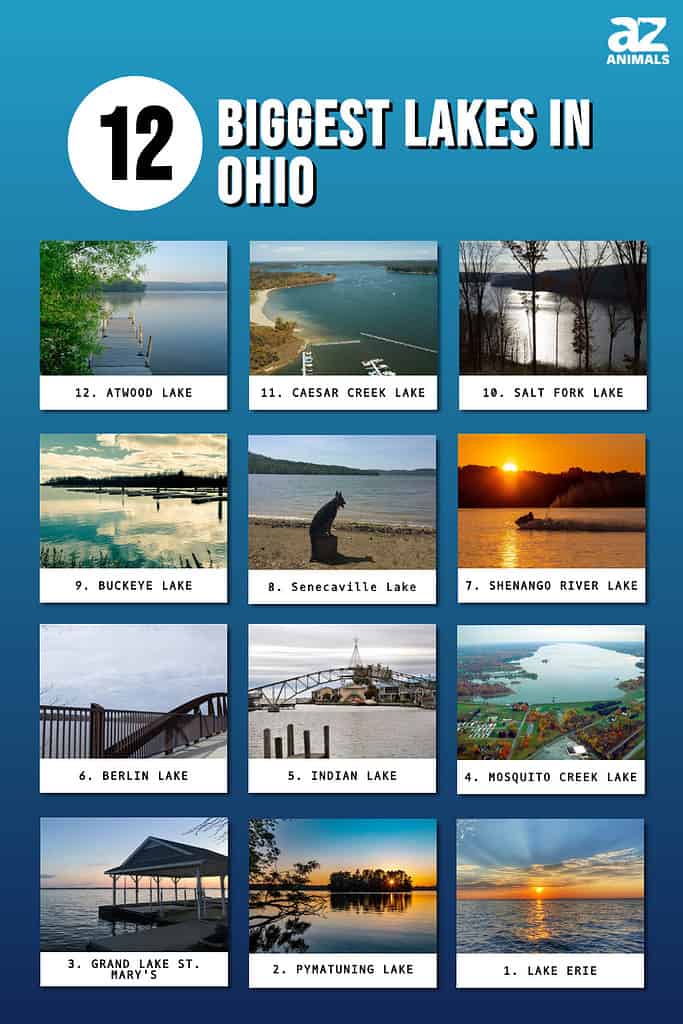
The 12 Biggest Lakes In Ohio
12. Atwood Lake

Having over 500 campsites, Atwood Lake is a popular sailing destination in Ohio.
©Karl Zhong/Shutterstock.com
Atwood Lake is a reservoir in the east-central Ohio counties of Tuscarawas and Carroll. It has a total surface area of 1,540 acres (6.2 km2) to 2,460 acres (10.0 km2). Atwood Dam, which spans Indian Fork, a tributary of Conotton Creek, creates the lake. Atwood Lake Park is a popular sailing destination in Ohio, with over 500 campsites, cabin and pavilion rentals, a swimming beach, hiking trails, boat launch, and others.
11. Caesar Creek Lake
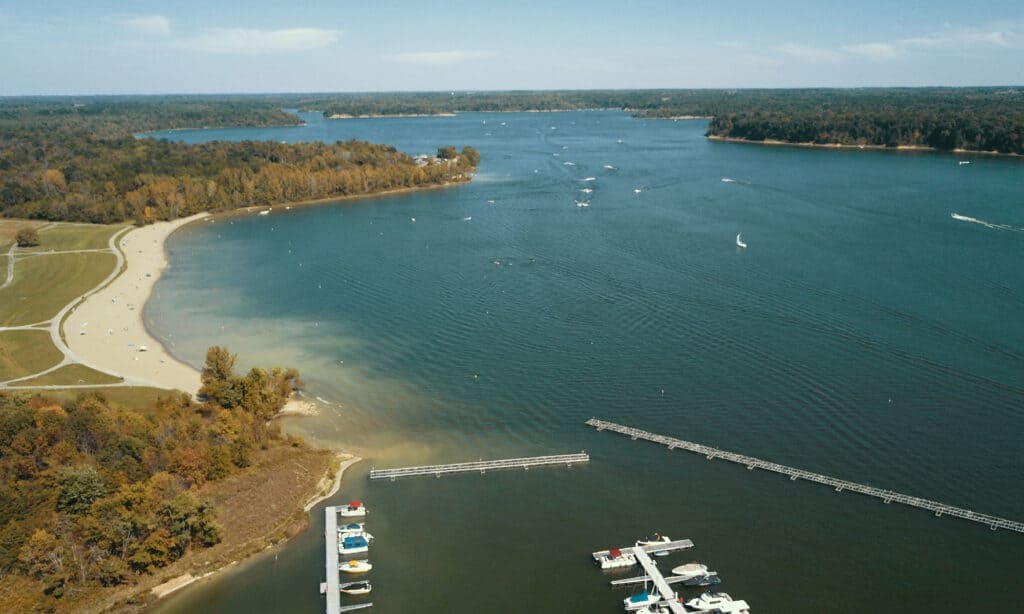
Caesar Creek Lake is one of the largest lakes in Ohio.
©Brendan Russell/Shutterstock.com
Encompassing a surface area of 2,829 acres or 11.45 sq km, Caesar Creek Lake is a lake inside the Caesar Creek State Park and is one of Ohio’s largest lakes. The park is rented by the US Army Corps of Engineers, which built a dam on Caesar Creek in the 1970s to create a 2,830-acre (1,150-hectare) lake. The park’s total size, including the lake, is 7,530 acres (3,050 ha). Caesar Creek was named after an enslaved Black person taken by the Shawnee on an Ohio River raid.
10. Salt Fork Lake
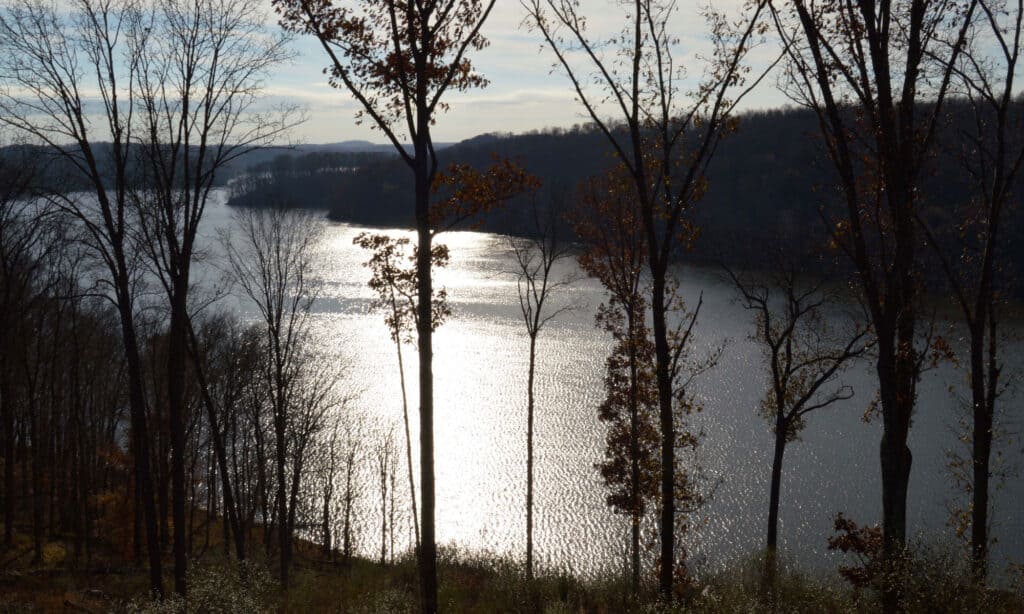
Ohio’s largest state park, Salt Fork Lake is located inside a public recreation park in Guernsey.
©ashleykirkpatrick/Shutterstock.com
Salt Fork Lake is one of Ohio’s most well-known bodies of water and one of the largest too. This lake has 2,952 acres and is located inside a public recreation park in Guernsey County, Ohio, six miles (9.7 km) north of Lore City. With 17,229 acres (6,972 ha) of land, it is Ohio’s largest state park. Salt Fork State Park offers boating, fishing, hiking, sailing, swimming, camping, picnics, horseback riding, winter sports, hunting, golfing, water sports, wildlife watching, and basketball.
9. Buckeye Lake
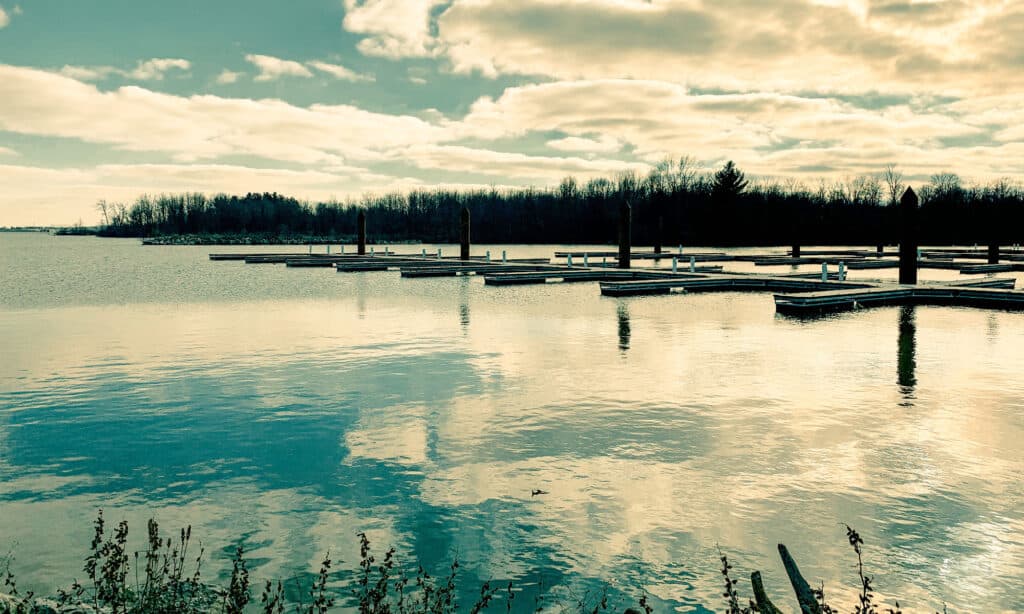
America’s first substantial artificial lake was Buckeye Lake.
©Tara Ballard/Shutterstock.com
Buckeye Lake is located just east of Columbus, Ohio. It has a surface size of 3,173 acres (12.84 km2) and a shoreline that stretches about 40 miles (65 km). Its capacity reaches 28 cubic miles of water and has a maximum depth of only 14 feet. Buckeye Lake was built in 1826 and was America’s first substantial man-made reservoir. It was developed as a canal feeder and became the county’s first official state park when the Ohio Department of Natural Resources was founded in 1949. The lake is teeming with freshwater catches like muskie, bass, perch, bluegill, catfish, and crappie. Cross-country skiing, ice fishing, ice boating, and ice skating are some of the many activities accessible in the lake.
8. Senecaville Lake
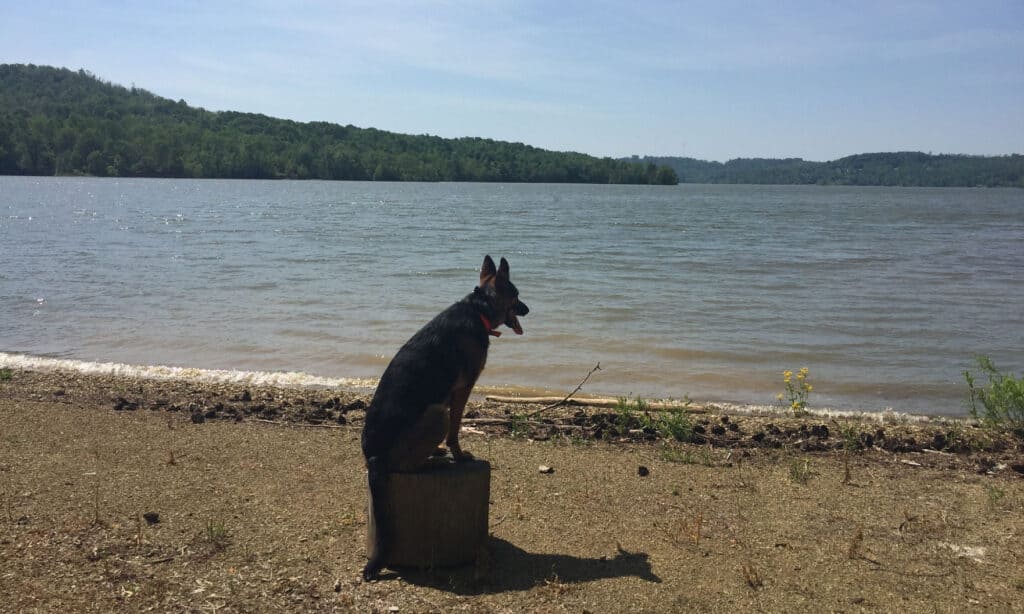
The third-largest inland lake in Ohio is Senecaville Lake.
©xPJ6x/Shutterstock.com
Senecaville Lake is currently the third-largest inland lake in Ohio, with a surface size of 3,550 acres or 5.5 square miles and a shoreline that stretches about 145 miles or 90 km. The lake contains 74 cubic miles of water and has a maximum depth of 31 feet. Senecaville Lake is a renowned outdoor leisure site in Ohio where boating, hiking, fishing, camping, hunting, swimming, bicycling, and other activities are popular. The Muskingum Watershed Conservancy District manages the lake, established by the US Army Corps of Engineers in 1938 for water conservation and flood control. Seneca Lake is home to freshwater fish like largemouth bass, bullheads, crappies, bluegills, channel catfish, and sauger.
7. Shenango River Lake
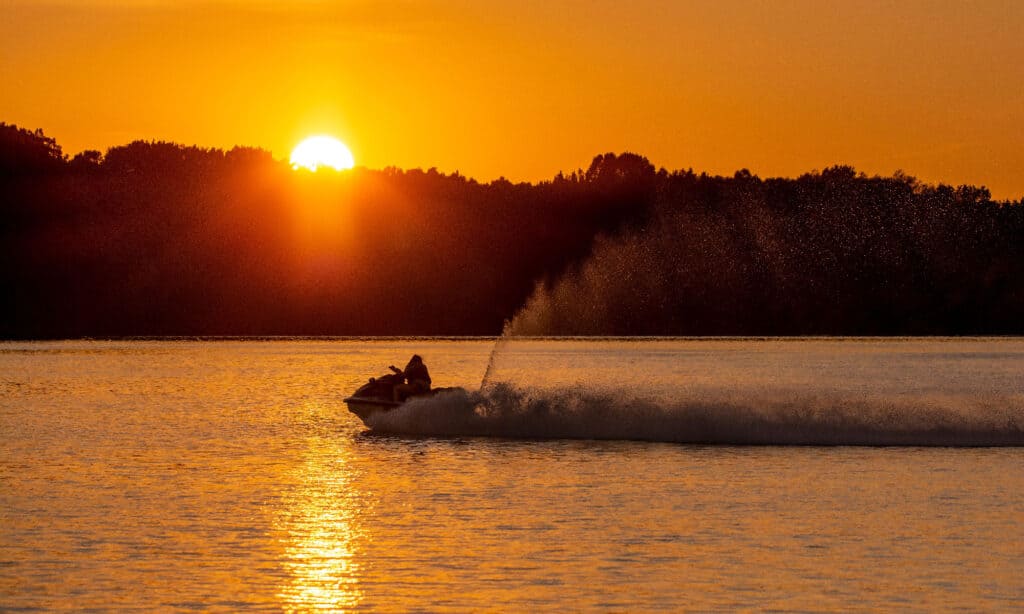
Having a shoreline that stretches over 47 miles, Shenango River Lake has a surface area of 3,560 acres.
©Adam Kenneth Campbell/Shutterstock.com
Shenango River Lake is a man-made lake built to safeguard the Shenango River from flooding. This lake has a surface area of 3,560 acres or 5.56 square miles, and a shoreline that stretches over 47 miles, just a few points bigger than Senecaville. It can hold 118 cubic miles of water with a maximum depth of 19 feet. Visitors can go camping, picnicking, and admire the beauty of the countryside. The ruins of the Erie Extension Canal, situated on project land, are a must-see for enthusiasts. Shenango River Lake is among 16 flood control projects in the Pittsburgh District authorized by the Flood Control Acts of 1938. Anglers flock to this spot, which is lined with 330 campsites. The reservoir can hold a maximum of 351,000 acre-feet of water and 29,920 acre-feet at its usual capacity.
6. Berlin Lake

Berlin Lake is the sixth largest lake in Ohio.
©Crystal Cogswell/Shutterstock.com
As of now, Berlin Lake is the sixth largest and sixth deepest lake visible in Ohio. This lake has a surface area of 3,650 acres at an average pool level and is surrounded by 68.48 miles of moderately sloping shoreline. Located in Cleveland, the lake has a capacity of 176 cubic miles of water and has a maximum depth of 76 feet. The area is densely forested with beech and maple trees, which give shade and beautiful fall color schemes.
Despite the lake’s popularity as a swimming area, there is no designated beach. With an average depth of roughly 16 feet, Berlin Lake is recognized for its excellent walleye fishing. The lake is also noted for its abundant fish species like the largemouth bass, smallmouth bass, walleye, crappie, brown bullhead, bluegill, channel catfish, and muskellunge are among the sport fish species found in Berlin Lake.
5. Indian Lake
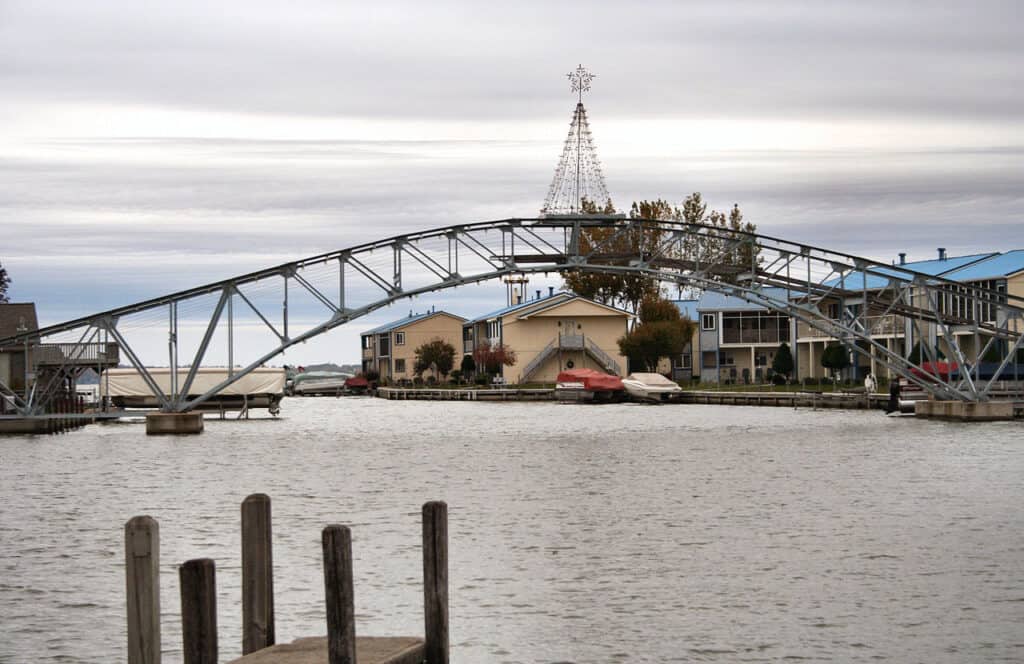
Indian Lake has a surface size of 5,104 acres.
©Tysto / I, the copyright holder of this work, release this work into the public domain. This applies worldwide.
The Atlantic Ocean is connected to some of Ohio’s lakes. Indian Lake in Cleveland is the biggest lake that connects to the ocean. This lake has a surface size of 5,104 acres (2,066 ha) and a shoreline that stretches over 183 miles. Indian Lake also has a capacity of 425 cubic miles of water with a maximum depth of 24.8 feet. Boating, ice fishing, fishing, water skiing, camping, and snowmobiling are just a few of the year-round water activities available at the lake. With its nationally recognized numbers of white and black crappie, bluegill, sauger, largemouth bass, channel catfish, carp, white bass, yellow perch, and bullheads, Indian Lake is a popular fishing destination. The lake features several big fishing tournaments each year and weekly events run by local bass groups.
4. Mosquito Creek Lake

The second-largest inland lake in Ohio is Mosquito Creek Lake.
©Margaret Luzier, U.S. Army Corps of Engineers / This image or file is a work of a U.S. Army Corps of Engineers soldier or employee, taken or made as part of that person’s official duties. As a work of the U.S. federal government, the image is in the public domain.
Mosquito Creek Lake is the second-largest inland lake in Ohio. This lake has a surface size of 7,850 acres (3,180 ha) and is bordered by a shoreline 133.5 miles long. The lake has a capacity of 450 cubic miles and a maximum depth of 24 feet. Mosquito Creek Lake was mainly constructed to help with pollution reduction, flood control, and water supply. In the northern Ohio city of Cortland, Mosquito Creek Lake has become one of the area’s top ten leading outdoor recreation sites. Anglers will find plenty of crappies, bass, northern pike, and catfish in Mosquito Lake noted for its excellent walleye fishing.
3. Grand Lake St. Marys
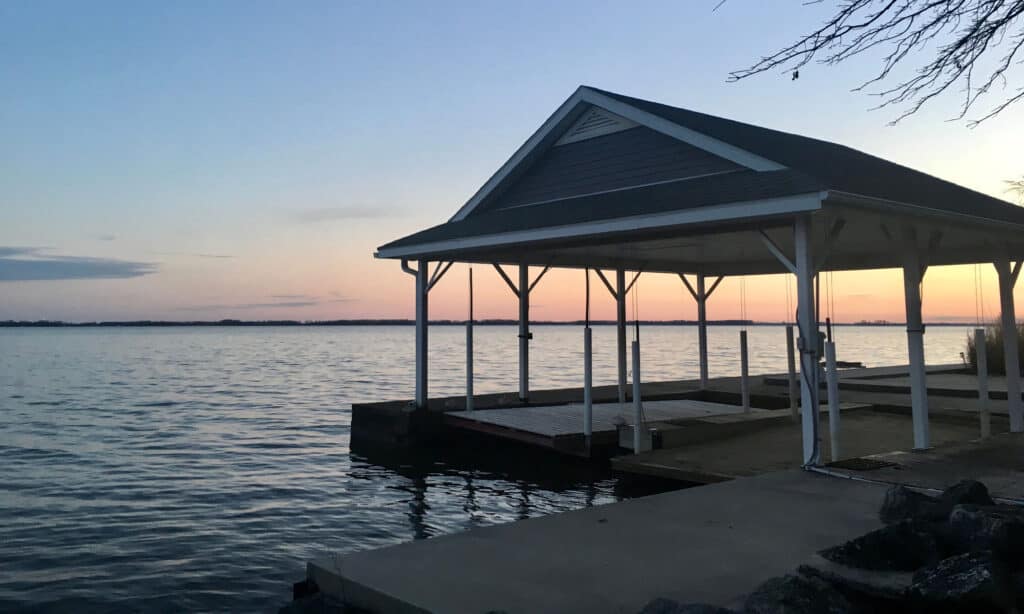
The largest artificial lake in Ohio is Grand Lake St. Marys Lake.
©lkabbes/Shutterstock.com
Grand Lake St. Marys is the largest man-made lake in Ohio, encompassing a surface area of 13,500-acre (5,500 ha) and bordered by a shoreline of 415 miles long. The lake is 218 cubic miles in size and is located in St. Marys Township, Ohio. Despite its size and title, the lake’s waters are pretty shallow, with a maximum depth reaching only 7 feet. Three lighthouses guard the lake’s perimeter, with the first one constructed in 1923. The most current was erected in 2003.
Fishers and anglers are lured to the lake for fishing all year round. The lake’s fish inhabitants include largemouth bass, bluegills, walleye, white and black crappies, yellow perch, bullheads, flathead catfish, carp, and suckers. Grand Lake St. Marys State Park is a public park created around the lake’s vicinity.
2. Pymatuning Lake

The second-largest lake in Ohio is Pymatuning Lake.
©iStock.com/Capturing Moments by Christina
Pymatuning Lake is Ohio’s second-largest lake, with a surface area of 17,088 acres (6,915 ha). The lake’s shoreline stretches about 70 mi (110 km) and boasts a capacity of 450 cubic miles of water. Pymatuning Lake is a man-made reservoir between Ashtabula County, Ohio, and Crawford County, Pennsylvania. The lake serves as a source of water for the Shenango and Beaver valleys and a flood-prevention and recreational site. It is also one of the top reservoirs in the state for walleye, muskellunge, largemouth bass, and smallmouth bass fishing and is recognized for its superb walleye populations.
- Lake Erie
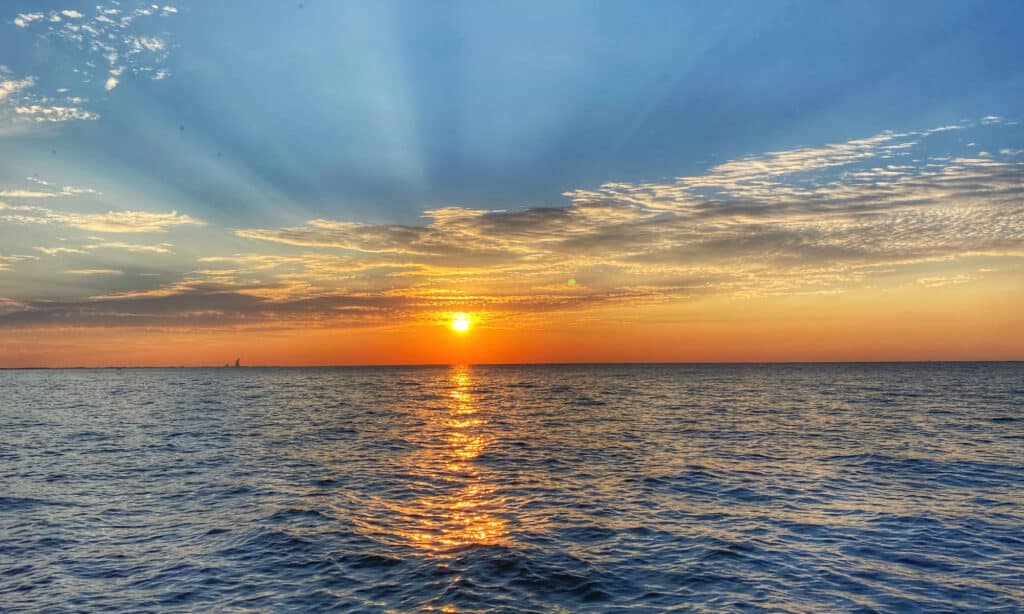
The largest lake in Ohio is Lake Erie.
©iStock.com/becky johnson
Lake Erie is 6.3615 million acres in area, stretching from the Canadian province of Ontario to the American states of Pennsylvania, Ohio, New York, and Michigan. At a maximum depth of 210 feet, it contains 116 cubic miles (480 cubic kilometers) of freshwater (64 meters). Lake Erie is a prominent geographical feature in North America since it borders Canada and the United States. These countries use water boundaries to divide the lake’s surface area. Cleveland, the biggest city touching the Great Lake, is the third-largest U.S. metro area in the Great Lakes region, following Greater Chicago and Metro Detroit.
Summary of the 12 Largest Lakes in Ohio
| Rank | Lake | Area |
|---|---|---|
| 1 | Lake Erie | 6,361,500 Acres |
| 2 | Pymatuning Lake | 17,088 Acres |
| 3 | Grand Lake St. Mary’s | 13,500 Acres |
| 4 | Mosquito Creek Lake | 7,850 Acres |
| 5 | Indian Lake | 5,104 Acres |
| 6 | Berlin Lake | 3,650 Acres |
| 7 | Shenango River Lake | 3,560 Acres |
| 8 | Senecaville Lake | 3,550 Acres |
| 9 | Buckeye Lake | 3,173 Acres |
| 10 | Salt Fork Lake | 2,952 Acres |
| 11 | Caesar Creek Lake | 2,829 Acres |
| 12 | Atwood Lake | 1,540 Acres |
Bonus: Three More Large Ohio Lakes
Ohio is home to so many beautiful lakes – we couldn’t resist adding three more to the list! These impressive additions are great in surface area and surrounded by natural beauty. They also offer some of the best fishing in the state and opportunities to experience local wildlife in its natural habitats.
Tappan Lake
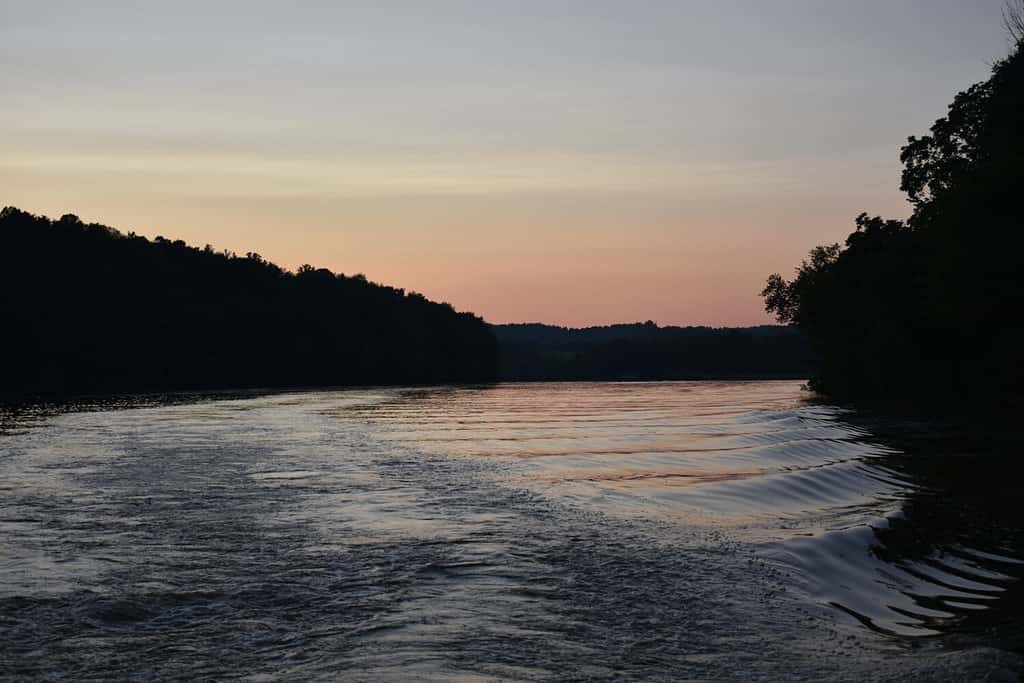
Tappan Lake is known for its clear water.
©Carson M/Shutterstock.com
The clear water of Tappan Lake covers a surface area of 2,250 square miles and is a popular swimming, boating, and fishing lake located near Cleveland. The 36-mile wooded shoreline features picnic tables, campgrounds, cabins, boat rentals, and handicapped access. There are several beautiful nature trails at different degrees of difficulty – offering something for hikers of all levels. The lake contains largemouth bass, bluegill, crappie, channel catfish, perch, and bullheads.
Clendening Lake

Clendening Lake is Ohio’s largest natural lake.
©Bwsmith84 at English Wikipedia / CC BY 3.0 – License
Clendening Lake is Ohio’s largest natural lake with over 1,800 acres of undeveloped fishing grounds in a stunning landscape. If you crave tranquility – Clendening Lake can certainly accommodate your needs with 44 miles of secluded beachfront located near Cleveland. Anglers love this lake because largemouth bass is plentiful – as well as flathead, channel catfish, crappie, and saugeye.
Lake Milton

Walleye are among the many fish caught in Lake Milton.
©iStock.com/FedBul
Located on the Trumbull County border in the northwest region of the state, Lake Milton is one of the oldest lakes in Ohio. 1,685 acres of great fishing are surrounded by a 23-mile coastline with a 600-foot beach. Sheltered picnic areas, hiking, and boating with no horsepower requirements offer visitors plenty of opportunities for fun. Fishing for walleye, crappie, bluegill, largemouth bass, smallmouth bass, channel catfish, yellow perch, and muskellunge is the most popular activity at this lovely lake.
The photo featured at the top of this post is © Tara Ballard/Shutterstock.com
Thank you for reading! Have some feedback for us? Contact the AZ Animals editorial team.






